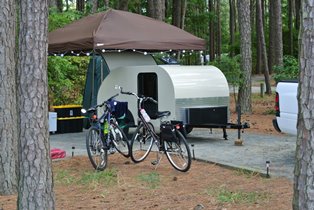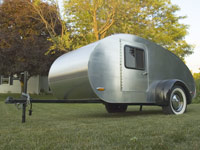Epoxy under plywood floor question
41 posts
• Page 1 of 3 • 1, 2, 3
Epoxy under plywood floor question
I have used 1/2" plywood for the floor on my trailer.
I, first, coated the underside with several coats of CPES.
I, then, coated the underside with several coats of Raka epoxy.
Since the underside of the trailer will not be in direct sunlight, I figured that I would not need to provide uv protection.
Anyone have comments? suggestions? experiences?
.
I, first, coated the underside with several coats of CPES.
I, then, coated the underside with several coats of Raka epoxy.
Since the underside of the trailer will not be in direct sunlight, I figured that I would not need to provide uv protection.
Anyone have comments? suggestions? experiences?
.
My TTT Garageable Standy Build Journal: viewtopic.php?f=50&t=40591
-

terryjones1 - Gold Donating Member
- Posts: 266
- Images: 1
- Joined: Wed Aug 25, 2010 2:09 pm
- Location: Lincoln, Ca
I did also use 2 coats of CPES and then fiberglass cloth with 2 coats of resin and then I also used the black asphalt emulsion. I work for the department of redundancy department.
Life is sooooo good.........
Sail...camp....bike...repeat
Becky
Build Journal http://www.tnttt.com/viewtopic.php?f=50&t=45917
Visit our blog at http://www.oldragbaggers.com


Sail...camp....bike...repeat
Becky
Build Journal http://www.tnttt.com/viewtopic.php?f=50&t=45917
Visit our blog at http://www.oldragbaggers.com
-

Oldragbaggers - Gold Donating Member
- Posts: 1842
- Images: 331
- Joined: Mon Aug 01, 2011 9:22 pm
- Location: Essex, MD

